









>>|
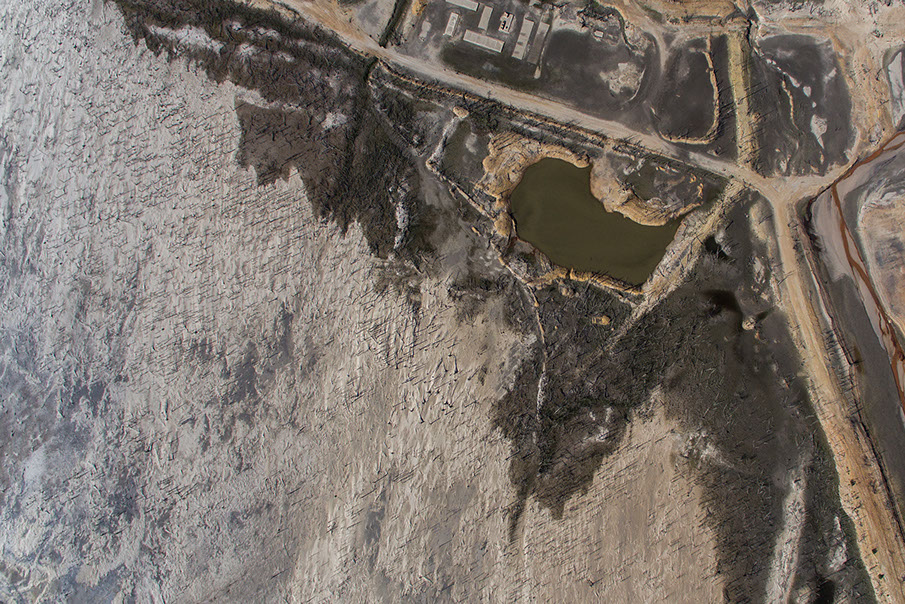

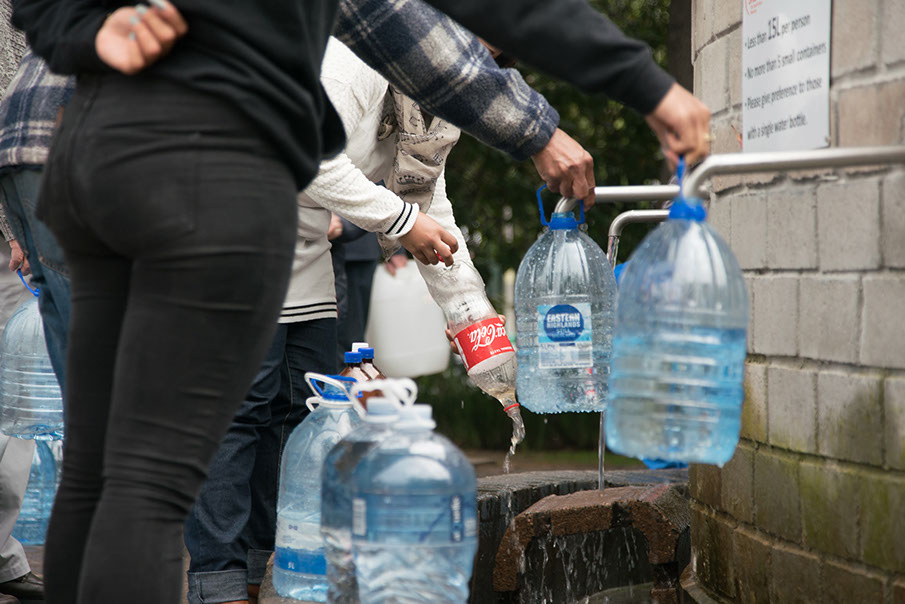


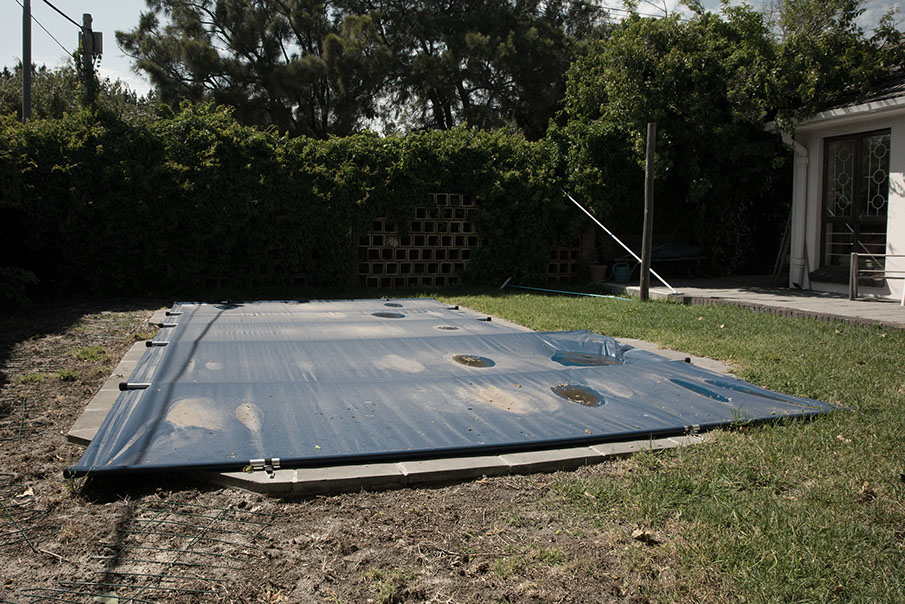
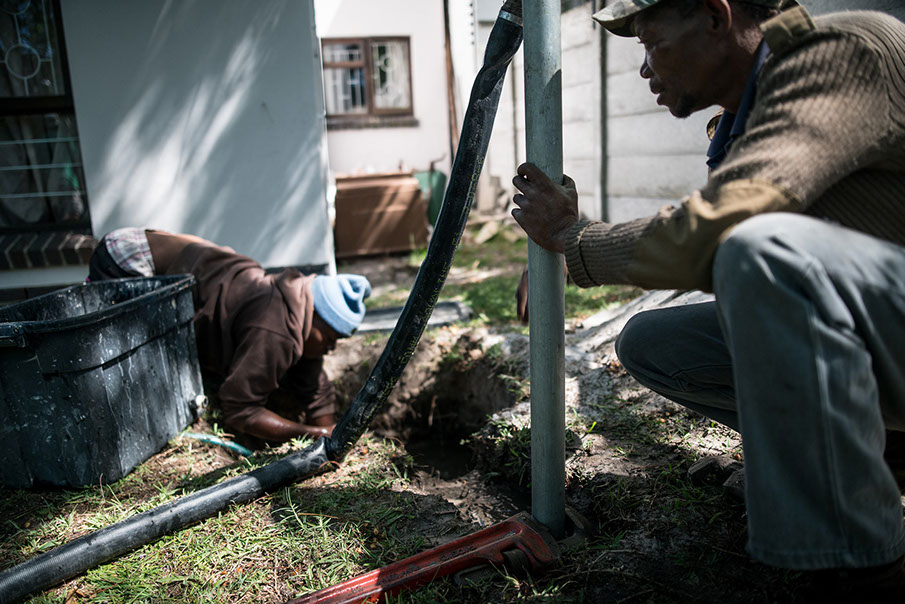
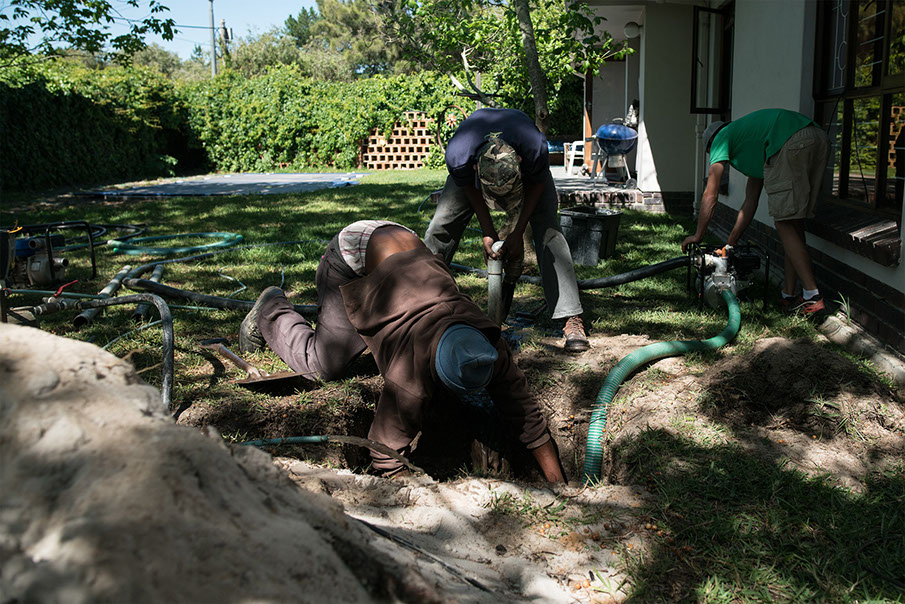
>
Theewaterskloof Dam, captured in July by Christiaan Serfontein.
Theewaterskloof Dam, captured in July by Christiaan Serfontein.
Residents resorting to storing spring water. Image by Shaun Swingler.
Residents resorting to storing spring water. Image by Shaun Swingler.
Residents resorting to storing spring water. Image by Shaun Swingler.
Residents resorting to digging private boreholes. Image by Shaun Swingler.
Residents resorting to digging private boreholes. Image by Shaun Swingler.
Residents resorting to digging private boreholes. Image by Shaun Swingler.




conceded they had finally been defeated by Spain’s worst drought in more than 60 years, despite their water saving efforts. The tankers were part of an emergency relief mission for a city reliant on reservoirs that had been reduced to 10% of capacity, and were two weeks away from hitting empty. The plan cost authorities €22-million (roughly R275-million at the time) and while it provided some relief, the massive dumps of water were barely enough to sustain demand. One tanker provided 180,000 people with fresh water for one day, and only 18 could be commissioned over the city’s busiest three months of the year, when tourists raised the 1.6-million-strong population by 15% percent. Mercifully, Barcelona was saved by a heavy rainfall described as miraculous.
In a report for the UK’s Independent, journalist Elizabeth Nash remarked, “(I)n the process [of warming up and drying out], this most modern of cities is living through a crisis that offers a disturbing glimpse of metropolitan futures everywhere.”
Fast forward to Cape Town in 2017, a geographically similar metropole, facing a one-in-1,000-year weather calamity. It’s the second city in South Africa to come dangerously close to running out of municipal water. Two years ago, water tankers had to be dispatched to the Johannesburg neighbourhoods of Brixton, Greenpoint and Coronationville as taps in those areas ran dry. Cape Town is a rapidly urbanising space with a population of 4.5-million, all of whom live in an increasingly dry province and country that have seen weather patterns shift dramatically in recent years. Like many parts of southern Africa, it keenly feels the effects of the El Niño phenomenon, with record high temperatures setting in for weeks at a time.
hen tankers carrying millions of litres of fresh water from France arrived at the port of Barcelona in May 2008, the city’s residents

city through six dry summer months--with no guarantee that a miraculous rain squall will arrive in the nick of time. Possible solutions have been in the works for over a decade, but many of them have been put into practice far too late. According to an experienced water researcher close to the issue who asked to remain anonymous for professional reasons, a tangible sense of concern first emerged among the city’s administrators in late 2016. “They really started to worry around May, when the rainfall they were hoping for wasn’t starting to show,” said the source. “A lot of climatologists thought we would get back to normal rainfall this year.”
The climatologists were wrong. Signs of overt panic in bureaucratic hallways became palpable in July 2017, added the source. But the first official warnings of potential water scarcity, and of the need to diversify the city’s water supply using ground water and other sources, was recorded by the city’s own researchers and consultants as early as 2002. The panic came 15 years too late.
uch like Barcelona, Cape Town will now face last-minute, emergency measures that may or may not be enough to see the
Video by Leila Dougan. Drone footage by Christiaan Serfontein
going to arrive, and that the volume of the city’s only water supply--an innovative network of six dams dotted strategically around the region – would dip well below 30% by the middle of the month, Executive Mayor Patricia de Lille held a sombre press conference.
“Due to the impacts of climate change and reduced average rainfall (...) the city of Cape Town has adopted a scenario called the New Normal,” she told those gathered before her. She then announced that authorities would be enforcing Phase One, which they deemed “water rationing through extreme pressure reduction”.
“The New Normal means that, as a permanent drought region, we have to change our relationship with water as a scarce resource,” said the mayor.
By mid-month, residents were reporting outages and water cuts at their homes to local radio stations and on Facebook groups. While the city had warned of rationing, authorities wouldn’t say where the outages would be occurring, and rumours began to surface, including of discrimination by class and race. Neighbourhoods with recorded levels showing overuse were fitted with measurement metres that strangled each household’s supply at the designated 87 litres, meaning that homes with large families were being cut off as early as noon every day. Borehole drillers’ schedules booked up well into the new year, and their prices for finding and abstracting ground water sky-rocketed with the demand. At the collection points beside natural springs burbling from Table Mountains into Newlands, queues of residents stretched later and later into the night.
By then, after a year of exhorting residents to “cut down water use or else” by the city, it had become clear that, without drastic interventions, public consumption would not change significantly from the more than 600-million litre-a-day standard to the 500-million litre-a-day target. Nevertheless, city officials at the 15th Biennial Groundwater Conference in Stellenbosch on 18 October steadily reiterated that they were confident a reduction in consumption would stave off a crisis.
“We're sitting at around 600-megalitres (of water a day),” said Barry Wood, water supply manager of the City of Cape Town. “There are some signs that we are starting to fall again, because we've been ramping up the awareness, we've started throttling down the distribution systems, et cetera. So we believe we're going to get down to 520-megalitres a day,” he said.
It was also reiterated that alternative sources of water were “still being considered,” but that bulk supply would realistically not come online by Day Zero – the day taps throughout the city run dry. This was deemed Phase Three: “A limited period in which the city can continue to supply water before complete water system failure,” according to De Lille’s press release. It remains unclear exactly when that day will come, although the city anticipates it could happen in March 2018.
“The day or month of (Day Zero) happening is, however, not as important as what we do now to avoid such a time,” De Lille said in a video address to residents announcing the disaster plan.
n May 2017, the Western Cape was declared a disaster area. By early October 2017, when it became clear that the winter rains were not
in 2007 stated conclusively that demand management or encouraging water conservation would not be enough to provide for a time of drought, projected to occur in 2015, Former Director General of Water Affairs, Mike Muller, told Daily Maverick Chronicle.
“(The study) listed 25 different interventions that Cape Town could undertake to provide more water or to use less water… it estimated how much each of them would cost,” said Muller, explaining that the study listed abstraction from the Table Mountain Group aquifer and water re-use among the suggested interventions.
“Those options were all put on the table as long ago as 2007, with the warning that by 2015 you are going to have to do some of these things, and they weren’t done,” said Muller. “None of them; except for attempts to manage demand, encourage people to use less and to things like reduce leaks and wastage. Those things were done but it was always recognised in the studies that that they were not going to be enough,” he said. “Cape Town city in particular thought they would be able to get away with doing nothing until 2022.”
Environmental hydrogeologist Ritchie Morris echoed Muller’s concerns that warnings had been long-standing, but added that no single administration could be held accountable. In his view, the problem is systemic. Morris points out that though administrations change, the problem of scientists’ research being hampered by bureaucratic red tape remains constant.
Asked why solutions were not implemented sooner, local government officials noted that the Berg River Dam project, completed eight years previously in 2009, had augmented Cape Town's water supply by 20% alongside efforts to curb water consumption. The city could not have proceeded more quickly due to the risk of unnecessarily over-capacitating the supply system at significant cost to the ratepayer, they said. De Lille told Daily Maverick Chronicle the city had to balance water security with maintaining fair tariffs for ratepayers. “The city could not have proceeded more quickly due to the risk of unnecessarily over-capacitating the supply system at significant cost to the ratepayer,” she said via an email from her spokesperson, Zara Nicholson. “In order to extend available water supply, the city has implemented progressive demand management as the most cost-effective measure, and water rationing has been intensified, which is yielding results to help stretch our water supplies. Rationing is being performed by drastically reducing water pressure to forcibly drive consumption down to the levels required by National Government.” The city had met with the Minister of Water and Sanitation in an attempt to ensure emergency licences could be obtained as quickly as possible, Nicholson added.
“The city is at the same time working as fast as it can to bring emergency water schemes online to augment our water supplies.”
alls to “avoid such a time” were made at least a decade ago, however. A study published for the Western Cape’s supply system
years. It comes from a network of porous, rocky underground storage systems called aquifers, ubiquitous in the Cape. Research into their viability as a potable water source for municipal use was already under way in the early 2000s and indicates the city was aware of the need for augmentation schemes at the time.
“It was part of a national plan,” said Christine Colvin, Senior Manager for Fresh Water at the World Wildlife Fund South Africa. Colvin, who was a researcher with the Council for Scientific and Industrial Research (CSIR) in Stellenbosch at the time, noted that “the three tiers of government – the national Department of Water and Sanitation, the province, and the city – were very well aligned around the plan that was developed in the early 2000s that looked at augmenting supplies into the future to meet a predicted growing demand.”
The research undertaken was, apparently, extensive. “We did a lot of research at that stage and established potential well field sites that would link into the existing water infrastructure, particularly the major pipelines coming from Theewaterskloof Dam,” said Colvin. “And from the researchers’ perspective, which was my perspective at that stage, we were then ready to move to the next phase from 2006.”
The next phase never came, despite recommendations and warnings by the city’s own contracted specialists over the coming years that groundwater would have to augment the dam supply. It was unclear why administrators chose not to go through with the project, or why they are still mulling over it. Currently, the city is abstracting only about 2% of its current use.
''Waiting for miracles does not constitute policy''
“Why (the city didn’t move into the next phase), I don’t know,” said the anonymous researcher. “Probably because it rained a lot. My personal opinion is that the Democratic Alliance is trying to show efficiency – that they are not overspending on projects, and that capital budget wasn’t used for alternative water supply development (when it was not needed).”
“The engineers were telling the city ‘there’s 97% capacity, which means that out of every 100 years, you’ll only need restrictions for three years',” said the source. “(So) they didn’t feel the need to plan ahead and add additional supply, because then we would have too much water.”
“I think what we found was there was a degree of optimism and a degree of belief in the effectiveness of these local measures that perhaps misled people,” said Winter.
“In 2013 and 2014 there were some really good rains,” he said. “During the wet season... not only had consumption in the city gone down, but the farmers hadn't used their full allocations, which made it look like there was more water available. So I think it was just a case that people were being more optimistic, people were trying to avoid spending money, which I understand, but they were warned and they chose to ignore the warning on a number of occasions,” he said.
While the national Department of Water and Sanitation is responsible for the allocation of bulk water, the city is responsible for managing it--and it has been lauded for a job well done for years. “The city was (told), we’re doing a good job,” said Claire Pengelly, Water Programme Manager at green economy sector development agency Greencape, who explained that the models administrators use to forecast water supply take long-term climatic models into account. “They thought, ‘we’re managing this system so efficiently and we’ve still got a hell of a lot of wiggle room',” she said. “The difficulty with being as efficient as possible means that you don’t want to build redundancy into a system, because in effect you feel like you’ve got redundancy already. So you don’t want to put in a hugely expensive project when you actually don’t need it, according to all the models and what (the engineers) are saying,” she explained.
Based on all their projections, water levels looked positive until the early 2020s.
“Cities are not allowed to plan on droughts, because they may not happen,” said Le Roy, a water and waste expert and the CEO of Water Shortage South Africa, a philanthropic NGO that assists with drought relief. “The city has had a flat demand curve over the last 10 years, despite growth in population. Water demand growth has been on the low curve and there have been a lot of plans to reuse sewage, desalination and so on over the last three or four years. So they were looking at plans and thinking things look pretty good,” he said.
There was, however, one thing they didn’t plan for: Climate change wasn’t progressing according to the Power Point presentations.
roundwater abstraction as a viable source of supply augmentation in particular has been suggested by hydrologists for at least 15

now seem ludicrous in their conservatism.
“This drought is an extraordinary weather event,” said Pengelly. “But I think that must be appreciated in terms of how different what we’re experiencing now is in comparison to what we’ve seen before.”
De Lille’s administration has been criticised for being too lenient on the national Department of Water and Sanitation and not publicly pressuring Minister Nomvula Mokonyane, a close ally of President Jacob Zuma, to clean up her department and ensure water provision was made for the Western Cape.
In 2017, Auditor-General, Kimi Makwetu’s report showed that water, along with school infrastructure, achieved the lowest targets in rolling out key programmes, despite those spending their entire budget. According to Makwetu, only 22% of their targets set for the year were achieved, while 67% weren’t achieved.
Western Cape Premier Helen Zille has, however, slammed Minister Mokonyane for failing to provide adequate funding for water infrastructure. At the Cape Water Indaba in 2017, it emerged that almost R3-billion was needed to address the water infrastructure backlog in the province. Zille, in the interim, has vowed to bill the national minister for water systems maintenance and repairs, while acknowledging she doubts the money will be forthcoming.
As far as the minister is concerned, however, the drought simply “caught us napping,” she said at the Water Indaba in 2017.
Since then, Nicholson told Daily Maverick Chronicle, co-operation has been more fruitful. “The mayor has met with the Minister of Water and Sanitation to discuss which licences will be required for emergency augmentation schemes. The minister made a commitment to work with the city to ensure we implement the various processes as quickly as possible to obtain the relevant licences,” she said. “The city has also received R20.8-million towards the city of Cape Town’s emergency disaster relief from the National Disaster Management Centre in the Department of Co-operative Governance.”
But Le Roy believes the Democratic Alliance-run province and city should have been more pro-active about distancing themselves from the national department’s failure to make enough bulk water provision, while simultaneously putting public pressure on Mokonyane to improve their mandated service. Mokonyane has been embroiled in multiple scandals, ranging from the “Ben10” reports alleging that she had young lovers she rewarded with tenders and other favours, to a string of axings and suspensions of senior members of her department.
“The city has taken their eye off the ball because they are not responsible for the provision of bulk water, the national department is,” said Le Roy. “Treating sewage and checking water quality. That’s where their expertise lies. Hoping for rain and relying on National to make provision was a big mistake,” he said.
In other words, waiting for miracles does not constitute policy.
ost expert projections suggested that climate change would only start taking a noticeable effect around 2030 - estimations that
>>|
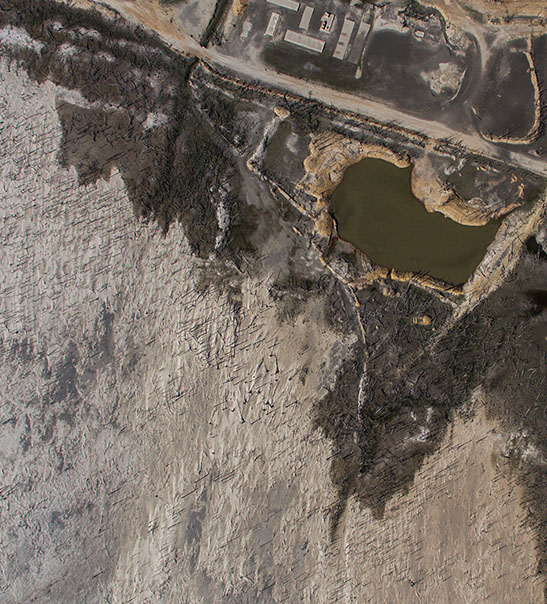
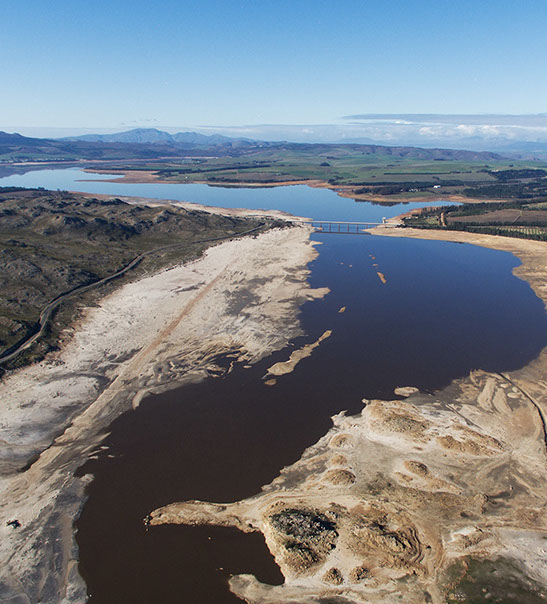
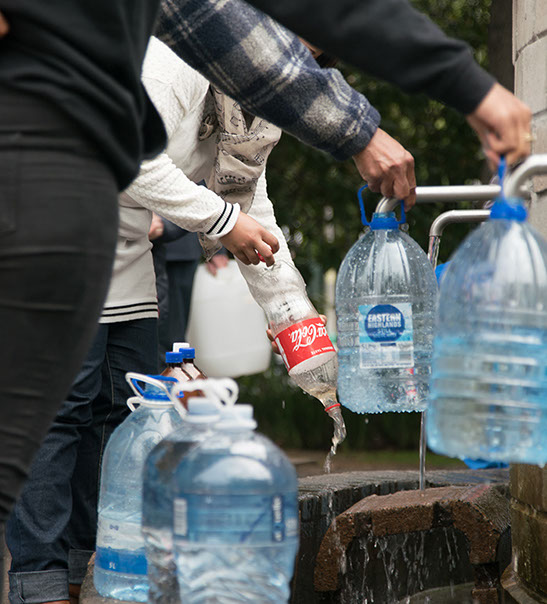
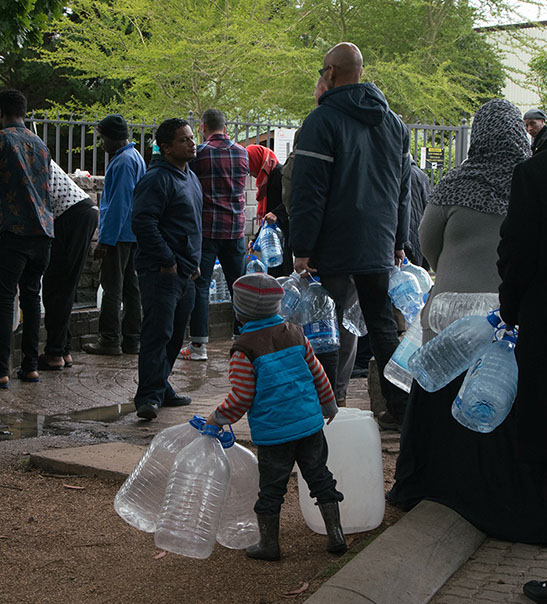
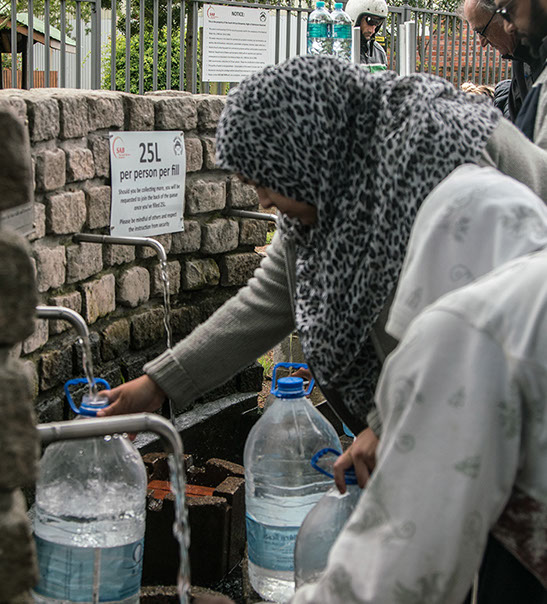
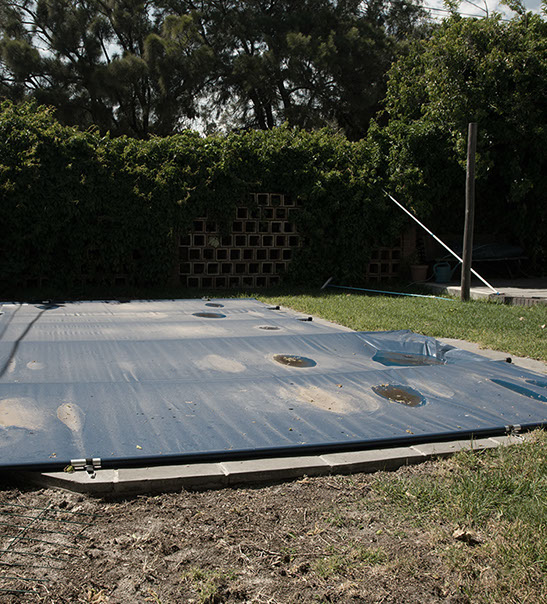

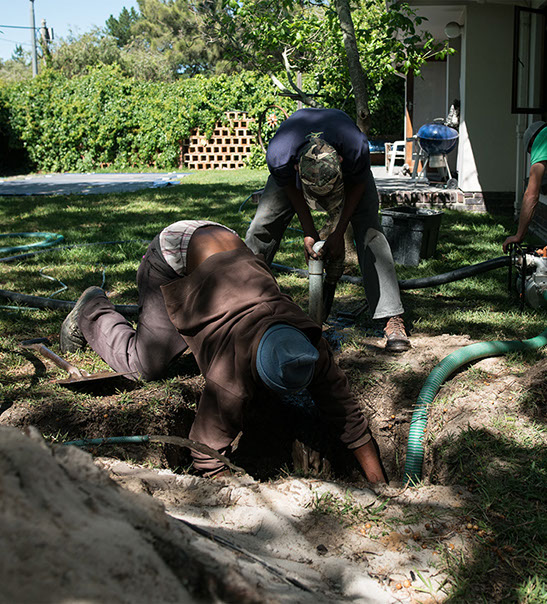
Theewaterskloof Dam, captured in July by Christiaan Serfontein.
Theewaterskloof Dam, captured in July by Christiaan Serfontein.
Residents resorting to storing spring water. Image by Shaun Swingler.
Residents resorting to storing spring water. Image by Shaun Swingler.
Residents resorting to storing spring water. Image by Shaun Swingler.
Residents resorting to digging private boreholes. Image by Shaun Swingler.
Residents resorting to digging private boreholes. Image by Shaun Swingler.
Residents resorting to digging private boreholes. Image by Shaun Swingler.
>
unlikely it is that sufficient alternative water provision would be ready by the time the dams run dry. They were also critical of how long the city has waited to take the appropriate action. A key point raised was concern that there may be more unusable sediment at the bottom of the dams than we are aware of.
A further concern: existing augmentation goals, as voiced by De Lille, mention an initial goal of 250-million litres, to be increased incrementally. With water augmentation tenders having gone out in August, and some initial tenders found to be unviable, water researchers agree that the chances are slim that even the rationed target of 500 to 600-million litres will be reached by March. City water supply manager Wood has said the city aims to increase the current yield of about 10-megalitres from groundwater to 100-megalitres, but the timeline is still unspecified. The unnamed researcher Chronicle spoke to bluntly said there was “no way” the targets would be met in time, given lengthy tender implementation, drilling and building processes. At the Groundwater Conference, chairman of the organising committee Roger Parsons said public perceptions grossly underestimated the seriousness of the situation.
Le Roy believes dams may run dry sooner than March, and is preparing accordingly. It’s a turning point for both his family and for the country if his projections regarding the drought turn out to be correct. He believes the school and university holidays will trigger the beginning of an exodus from Cape Town that will send his daughter home indefinitely and the local economy into freefall.
“I’ve told (my daughter) to keep her petrol tank full and a bag of clothes in the car,” said Le Roy from his home in Johannesburg. “When the Christmas holidays start she’ll leave Cape Town and she won’t necessarily go back. We are being cautious and keeping our options open.”
By December, Le Roy believes the city of Cape Town could be in crisis mode or, interpreting De Lille’s October statement, Phase 2. This would include rationing of the entire water system, with assigned water points being provided with inventory, AKA drinkable water. He believes it will not take long before badly affected businesses start closing their doors and/or attempt to relocate staff, or let them go. Productivity across formal sectors will plummet and panic purchasing of bottled water will set in as taps run dry. Those who can afford to will probably pack their cars and drive to friends and family in other provinces.
Already, industries are beginning to make emergency provisions. On 12 October, Transnet authorities suspended the sale and supply of fresh water at the Port of Cape Town, an important repair and maintenance facility on one of the world’s busiest trade routes.
“Ship repairers are requested to advise their clientèle that no fresh water will be available for any repair work to vessels during their stay in the dry docks,” the statement said. “Vessels are hereby requested to take in water at other ports not affected by the drought.”
The dry weather has taken a huge toll on farmers in the region, who have had to cut their water consumption by 50% in the last year. In the fourth quarter of 2015 alone, the national agriculture sector lost 37,000 jobs, which pushed an additional 50,000 people below the poverty line and accelerated consumer inflation and rising food prices.
“Farmers in the Western Cape are absolutely at the front line of having to implement dramatic changes,” said Colvin. They are being asked to severely curtail their water demand and their water usage. And that is resulting in farmers having to decide which fields they irrigate and which they don’t,” she said.
“We know for instance the fruit farmers are removing the blossoms from their trees so that the trees don’t fruit, because they can just about keep the trees alive with the water that they have if they don’t fruit.”
Whole sectors and industries across the board are having to make increasingly difficult decisions in the face of uncertainty about just how bad things will get.
Colvin is also projecting a turning point at the end of the year.
“The view from the experts is, to meet the targets in megalitres by the dates they are needed to stave off Day Zero is extremely challenging,” she said. “There’s no contingency available there. All of us who’ve worked in this sector, we’re already looking towards the end of the year and the Christmas season and we know there’s big competition for desalination worldwide, especially after the hurricanes (in North and Central America), so there’s very little wiggle room at the moment.”
Dr Kevin Winter of the University of Cape Town (UCT)’s department of Environmental and Geographical Science and Future Water Institute, described a worst-case scenario for Cape Town back in February, should the taps run dry.
“Water will have to be trucked in to central points,” wrote Winter for the Cape Town Partnership. “You would have to allocate a certain amount of hours to stand in a queue and I guess it doesn’t take too much imagination to think of the implications. Apart from being an administrative nightmare, this sort of situation will also have a huge impact on the environment, human health, the economy and civil society.”
''You would have to allocate a certain amount of hours to stand in a queue and I guess it doesn’t take too much imagination to think of the implications''
Should Cape Town’s water system fail – which the mayor has vowed will not happen – infrastructure would be at serious risk. In the absence of water pressure to counteract the weight of what they’re buried under, underground pipes would crack and burst. Raw faeces could be caking in overflowing toilets and on pavements throughout the city, with no water to wash it down into the overburdened, plugged up sewage system below. “Open defecation” would probably become common. The smell would be unbearable; the waste attracting flies and the heat bringing mosquitoes. According to Le Roy, methane gas released from the drying faeces would pose a risk of subterranean explosions.
In the townships such as Gugulethu, Khayelitsha, Masiphumelele, and Imizamo Yethu, it is not hard to imagine the effects, already widespread where sanitation is poor. Children and the elderly living in close proximity and unable to escape a potential build-up of sewage could start to contract food and water-borne diseases, including gastro, diarrhoea, hepatitis A and salmonella. Respiratory viruses like influenza would also be more easily transmitted by unwashed hands.
“Issues around sewage disposal lead to increased flies and rodents,” explained Dr Kerrigan McCarthy of the National Institute for Communicable Diseases (NICD). “There have been outbreaks of Typhoid in the Western Cape before, transmitted via faecal-oral contamination. (So) there is potential for increased disease transmission,” she said, adding that the potential drought crisis is “on the national disaster relief committee’s radar”.
“Impacts on human health (would) become increasingly evident,” wrote Winter. “The absence of clean drinking water and water for body washing results in dehydration, diarrhoea and related illnesses, along with skin sores and malnutrition.”
If this were not contained quickly and hospitals became overwhelmed or unable to operate at capacity without water, more severe outbreaks could follow. Médecins Sans Frontières, the international medical humanitarian organisation, has a presence in Khayelitsha and was unable to comment on the existence of an emergency contingency plan for any outbreaks of disease, but said that, as a partner to the City of Cape Town and the Western Cape Department of Health, it would be “monitoring the situation to assess if any support would be necessary or feasible.”
Wood and De Lille have said the city has a disaster plan in place in case of water system failure. They did not, however, specify what it was.
Parsons, meanwhile, has described the current situation as “dire.” Airwater entrepreneur Ray de Vries described it as a “catastrophe,” echoing Muller and Le Roy’s sentiments that in their opinion, Cape Town could be the first major city in the world to run out of municipal water.
Asked for clarification, De Vries told Daily Maverick Chronicle that if Cape Town were to run out of water, it would represent a highly visible municipal failure within a major developed, global city, which he believed was unprecedented. Mayor De Lille herself had said a well-run city does not run out of water, he said. Yet, he added, in his view current indications were that augmentation projects would not provide the required yield in time.
Whether this will happen depends on a number of unpredictable variables: quick, painless tender processing, rapid implementation and – most fickle of all - the weather.
As for Le Roy and his team at Water Shortage South Africa, they’re not waiting to find out. They’re making as many international connections as possible, with anybody “with an ear for the dire South African water situation”. And they’re tackling the bureaucratic ladder towards the United Nations, before it’s too late.
But Le Roy is not optimistic. “The low road is the probable road, given the information, which is the worst-case scenario,” he said. “The indications are that we’re there.” DM
e Roy and many other water experts that Daily Maverick Chronicle spoke to for this investigation painted a grim picture of just how



the port of Barcelona in May 2008, the city’s residents conceded they had finally been defeated by Spain’s worst drought in more than 60 years, despite their water saving efforts. The tankers were part of an emergency relief mission for a city reliant on reservoirs that had been reduced to 10% of capacity, and were two weeks away from hitting empty. The plan cost authorities €22-million (roughly R275-million at the time) and while it provided some relief, the massive dumps of water were barely enough to sustain demand. One tanker provided 180,000 people with fresh water for one day, and only 18 could be commissioned over the city’s busiest three months of the year, when tourists raised the 1.6-million-strong population by 15% percent. Mercifully, Barcelona was saved by a heavy rainfall described as miraculous.
In a report for the UK’s Independent, journalist Elizabeth Nash remarked, “(I)n the process [of warming up and drying out], this most modern of cities is living through a crisis that offers a disturbing glimpse of metropolitan futures everywhere.”
Fast forward to Cape Town in 2017, a geographically similar metropole, facing a one-in-1,000-year weather calamity. It’s the second city in South Africa to come dangerously close to running out of municipal water. Two years ago, water tankers had to be dispatched to the Johannesburg neighbourhoods of Brixton, Greenpoint and Coronationville as taps in those areas ran dry. Cape Town is a rapidly urbanising space with a population of 4.5-million, all of whom live in an increasingly dry province and country that have seen weather patterns shift dramatically in recent years. Like many parts of southern Africa, it keenly feels the effects of the El Niño phenomenon, with record high temperatures setting in for weeks at a time.
hen tankers carrying millions of litres of fresh water from France arrived at

that may or may not be enough to see the city through six dry summer months--with no guarantee that a miraculous rain squall will arrive in the nick of time. Possible solutions have been in the works for over a decade, but many of them have been put into practice far too late. According to an experienced water researcher close to the issue who asked to remain anonymous for professional reasons, a tangible sense of concern first emerged among the city’s administrators in late 2016. “They really started to worry around May, when the rainfall they were hoping for wasn’t starting to show,” said the source. “A lot of climatologists thought we would get back to normal rainfall this year.”
The climatologists were wrong. Signs of overt panic in bureaucratic hallways became palpable in July 2017, added the source. But the first official warnings of potential water scarcity, and of the need to diversify the city’s water supply using ground water and other sources, was recorded by the city’s own researchers and consultants as early as 2002. The panic came 15 years too late.
uch like Barcelona, Cape Town will now face last-minute, emergency measures
Video by Leila Dougan. Drone footage by Christiaan Serfontein
2017, when it became clear that the winter rains were not going to arrive, and that the volume of the city’s only water supply--an innovative network of six dams dotted strategically around the region – would dip well below 30% by the middle of the month, Executive Mayor Patricia de Lille held a sombre press conference.
“Due to the impacts of climate change and reduced average rainfall (...) the city of Cape Town has adopted a scenario called the New Normal,” she told those gathered before her. She then announced that authorities would be enforcing Phase One, which they deemed “water rationing through extreme pressure reduction”.
“The New Normal means that, as a permanent drought region, we have to change our relationship with water as a scarce resource,” said the mayor.
By mid-month, residents were reporting outages and water cuts at their homes to local radio stations and on Facebook groups. While the city had warned of rationing, authorities wouldn’t say where the outages would be occurring, and rumours began to surface, including of discrimination by class and race. Neighbourhoods with recorded levels showing overuse were fitted with measurement metres that strangled each household’s supply at the designated 87 litres, meaning that homes with large families were being cut off as early as noon every day. Borehole drillers’ schedules booked up well into the new year, and their prices for finding and abstracting ground water sky-rocketed with the demand. At the collection points beside natural springs burbling from Table Mountains into Newlands, queues of residents stretched later and later into the night.
By then, after a year of exhorting residents to “cut down water use or else” by the city, it had become clear that, without drastic interventions, public consumption would not change significantly from the more than 600-million litre-a-day standard to the 500-million litre-a-day target. Nevertheless, city officials at the 15th Biennial Groundwater Conference in Stellenbosch on 18 October steadily reiterated that they were confident a reduction in consumption would stave off a crisis.
“We're sitting at around 600-megalitres (of water a day),” said Barry Wood, water supply manager of the City of Cape Town. “There are some signs that we are starting to fall again, because we've been ramping up the awareness, we've started throttling down the distribution systems, et cetera. So we believe we're going to get down to 520-megalitres a day,” he said.
It was also reiterated that alternative sources of water were “still being considered,” but that bulk supply would realistically not come online by Day Zero – the day taps throughout the city run dry. This was deemed Phase Three: “A limited period in which the city can continue to supply water before complete water system failure,” according to De Lille’s press release. It remains unclear exactly when that day will come, although the city anticipates it could happen in March 2018.
“The day or month of (Day Zero) happening is, however, not as important as what we do now to avoid such a time,” De Lille said in a video address to residents announcing the disaster plan.
n May 2017, the Western Cape was declared a disaster area. By early October
published for the Western Cape’s supply system in 2007 stated conclusively that demand management or encouraging water conservation would not be enough to provide for a time of drought, projected to occur in 2015, Former Director General of Water Affairs, Mike Muller, told Daily Maverick Chronicle.
“(The study) listed 25 different interventions that Cape Town could undertake to provide more water or to use less water… it estimated how much each of them would cost,” said Muller, explaining that the study listed abstraction from the Table Mountain Group aquifer and water re-use among the suggested interventions.
“Those options were all put on the table as long ago as 2007, with the warning that by 2015 you are going to have to do some of these things, and they weren’t done,” said Muller. “None of them; except for attempts to manage demand, encourage people to use less and to things like reduce leaks and wastage. Those things were done but it was always recognised in the studies that that they were not going to be enough,” he said. “Cape Town city in particular thought they would be able to get away with doing nothing until 2022.”
Environmental hydrogeologist Ritchie Morris echoed Muller’s concerns that warnings had been long-standing, but added that no single administration could be held accountable. In his view, the problem is systemic. Morris points out that though administrations change, the problem of scientists’ research being hampered by bureaucratic red tape remains constant.
Asked why solutions were not implemented sooner, local government officials noted that the Berg River Dam project, completed eight years previously in 2009, had augmented Cape Town's water supply by 20% alongside efforts to curb water consumption. The city could not have proceeded more quickly due to the risk of unnecessarily over-capacitating the supply system at significant cost to the ratepayer, they said. De Lille told Daily Maverick Chronicle the city had to balance water security with maintaining fair tariffs for ratepayers. “The city could not have proceeded more quickly due to the risk of unnecessarily over-capacitating the supply system at significant cost to the ratepayer,” she said via an email from her spokesperson, Zara Nicholson. “In order to extend available water supply, the city has implemented progressive demand management as the most cost-effective measure, and water rationing has been intensified, which is yielding results to help stretch our water supplies. Rationing is being performed by drastically reducing water pressure to forcibly drive consumption down to the levels required by National Government.” The city had met with the Minister of Water and Sanitation in an attempt to ensure emergency licences could be obtained as quickly as possible, Nicholson added.
“The city is at the same time working as fast as it can to bring emergency water schemes online to augment our water supplies.”
alls to “avoid such a time” were made at least a decade ago, however. A study
particular has been suggested by hydrologists for at least 15 years. It comes from a network of porous, rocky underground storage systems called aquifers, ubiquitous in the Cape. Research into their viability as a potable water source for municipal use was already under way in the early 2000s and indicates the city was aware of the need for augmentation schemes at the time.
“It was part of a national plan,” said Christine Colvin, Senior Manager for Fresh Water at the World Wildlife Fund South Africa. Colvin, who was a researcher with the Council for Scientific and Industrial Research (CSIR) in Stellenbosch at the time, noted that “the three tiers of government – the national Department of Water and Sanitation, the province, and the city – were very well aligned around the plan that was developed in the early 2000s that looked at augmenting supplies into the future to meet a predicted growing demand.”
The research undertaken was, apparently, extensive. “We did a lot of research at that stage and established potential well field sites that would link into the existing water infrastructure, particularly the major pipelines coming from Theewaterskloof Dam,” said Colvin. “And from the researchers’ perspective, which was my perspective at that stage, we were then ready to move to the next phase from 2006.”
''Waiting for miracles does not constitute policy''
The next phase never came, despite recommendations and warnings by the city’s own contracted specialists over the coming years that groundwater would have to augment the dam supply. It was unclear why administrators chose not to go through with the project, or why they are still mulling over it. Currently, the city is abstracting only about 2% of its current use.
“Why (the city didn’t move into the next phase), I don’t know,” said the anonymous researcher. “Probably because it rained a lot. My personal opinion is that the Democratic Alliance is trying to show efficiency – that they are not overspending on projects, and that capital budget wasn’t used for alternative water supply development (when it was not needed).”
“The engineers were telling the city ‘there’s 97% capacity, which means that out of every 100 years, you’ll only need restrictions for three years',” said the source. “(So) they didn’t feel the need to plan ahead and add additional supply, because then we would have too much water.”
“I think what we found was there was a degree of optimism and a degree of belief in the effectiveness of these local measures that perhaps misled people,” said Winter.
“In 2013 and 2014 there were some really good rains,” he said. “During the wet season... not only had consumption in the city gone down, but the farmers hadn't used their full allocations, which made it look like there was more water available. So I think it was just a case that people were being more optimistic, people were trying to avoid spending money, which I understand, but they were warned and they chose to ignore the warning on a number of occasions,” he said.
While the national Department of Water and Sanitation is responsible for the allocation of bulk water, the city is responsible for managing it--and it has been lauded for a job well done for years. “The city was (told), we’re doing a good job,” said Claire Pengelly, Water Programme Manager at green economy sector development agency Greencape, who explained that the models administrators use to forecast water supply take long-term climatic models into account. “They thought, ‘we’re managing this system so efficiently and we’ve still got a hell of a lot of wiggle room',” she said. “The difficulty with being as efficient as possible means that you don’t want to build redundancy into a system, because in effect you feel like you’ve got redundancy already. So you don’t want to put in a hugely expensive project when you actually don’t need it, according to all the models and what (the engineers) are saying,” she explained.
Based on all their projections, water levels looked positive until the early 2020s.
“Cities are not allowed to plan on droughts, because they may not happen,” said Le Roy, a water and waste expert and the CEO of Water Shortage South Africa, a philanthropic NGO that assists with drought relief. “The city has had a flat demand curve over the last 10 years, despite growth in population. Water demand growth has been on the low curve and there have been a lot of plans to reuse sewage, desalination and so on over the last three or four years. So they were looking at plans and thinking things look pretty good,” he said.
There was, however, one thing they didn’t plan for: Climate change wasn’t progressing according to the Power Point presentations.
roundwater abstraction as a viable source of supply augmentation in

a noticeable effect around 2030 - estimations that now seem ludicrous in their conservatism.
“This drought is an extraordinary weather event,” said Pengelly. “But I think that must be appreciated in terms of how different what we’re experiencing now is in comparison to what we’ve seen before.”
De Lille’s administration has been criticised for being too lenient on the national Department of Water and Sanitation and not publicly pressuring Minister Nomvula Mokonyane, a close ally of President Jacob Zuma, to clean up her department and ensure water provision was made for the Western Cape.
In 2017, Auditor-General, Kimi Makwetu’s report showed that water, along with school infrastructure, achieved the lowest targets in rolling out key programmes, despite those spending their entire budget. According to Makwetu, only 22% of their targets set for the year were achieved, while 67% weren’t achieved.
Western Cape Premier Helen Zille has, however, slammed Minister Mokonyane for failing to provide adequate funding for water infrastructure. At the Cape Water Indaba in 2017, it emerged that almost R3-billion was needed to address the water infrastructure backlog in the province. Zille, in the interim, has vowed to bill the national minister for water systems maintenance and repairs, while acknowledging she doubts the money will be forthcoming.
As far as the minister is concerned, however, the drought simply “caught us napping,” she said at the Water Indaba in 2017.
Since then, Nicholson told Daily Maverick Chronicle, co-operation has been more fruitful. “The mayor has met with the Minister of Water and Sanitation to discuss which licences will be required for emergency augmentation schemes. The minister made a commitment to work with the city to ensure we implement the various processes as quickly as possible to obtain the relevant licences,” she said. “The city has also received R20.8-million towards the city of Cape Town’s emergency disaster relief from the National Disaster Management Centre in the Department of Co-operative Governance.”
But Le Roy believes the Democratic Alliance-run province and city should have been more pro-active about distancing themselves from the national department’s failure to make enough bulk water provision, while simultaneously putting public pressure on Mokonyane to improve their mandated service. Mokonyane has been embroiled in multiple scandals, ranging from the “Ben10” reports alleging that she had young lovers she rewarded with tenders and other favours, to a string of axings and suspensions of senior members of her department.
“The city has taken their eye off the ball because they are not responsible for the provision of bulk water, the national department is,” said Le Roy. “Treating sewage and checking water quality. That’s where their expertise lies. Hoping for rain and relying on National to make provision was a big mistake,” he said.
In other words, waiting for miracles does not constitute policy.
ost expert projections suggested that climate change would only start taking
>>|
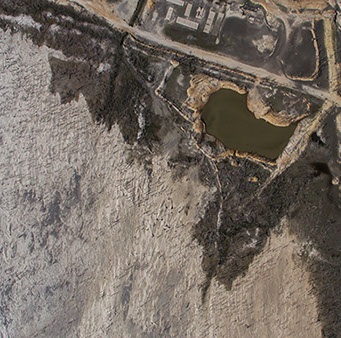
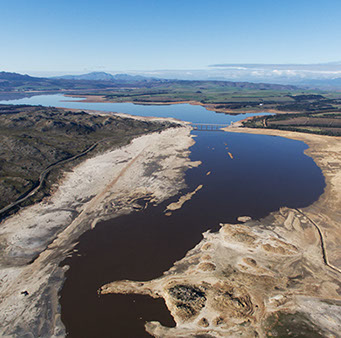

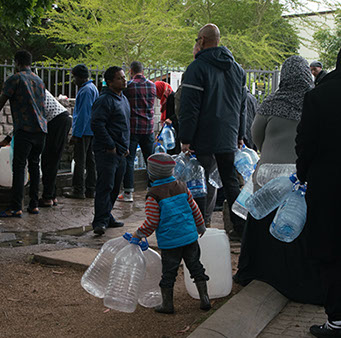
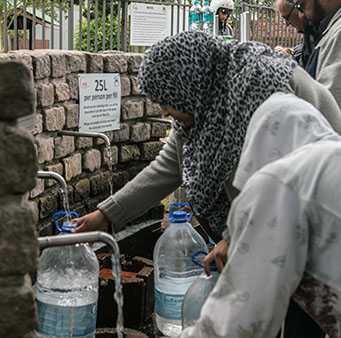
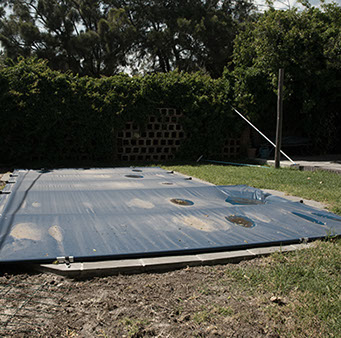
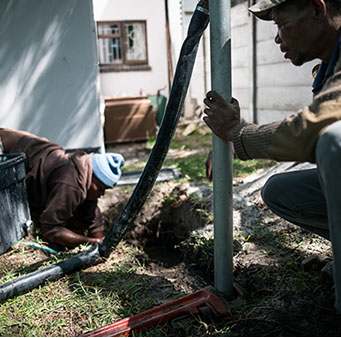

Theewaterskloof Dam, captured in July by Christiaan Serfontein.
Theewaterskloof Dam, captured in July by Christiaan Serfontein.
Residents resorting to storing spring water. Image by Shaun Swingler.
Residents resorting to storing spring water. Image by Shaun Swingler.
Residents resorting to storing spring water. Image by Shaun Swingler.
Residents resorting to digging private boreholes. Image by Shaun Swingler.
Residents resorting to digging private boreholes. Image by Shaun Swingler.
Residents resorting to digging private boreholes. Image by Shaun Swingler.
>
this investigation painted a grim picture of just how unlikely it is that sufficient alternative water provision would be ready by the time the dams run dry. They were also critical of how long the city has waited to take the appropriate action. A key point raised was concern that there may be more unusable sediment at the bottom of the dams than we are aware of.
A further concern: existing augmentation goals, as voiced by De Lille, mention an initial goal of 250-million litres, to be increased incrementally. With water augmentation tenders having gone out in August, and some initial tenders found to be unviable, water researchers agree that the chances are slim that even the rationed target of 500 to 600-million litres will be reached by March. City water supply manager Wood has said the city aims to increase the current yield of about 10-megalitres from groundwater to 100-megalitres, but the timeline is still unspecified. The unnamed researcher Chronicle spoke to bluntly said there was “no way” the targets would be met in time, given lengthy tender implementation, drilling and building processes. At the Groundwater Conference, chairman of the organising committee Roger Parsons said public perceptions grossly underestimated the seriousness of the situation.
Le Roy believes dams may run dry sooner than March, and is preparing accordingly. It’s a turning point for both his family and for the country if his projections regarding the drought turn out to be correct. He believes the school and university holidays will trigger the beginning of an exodus from Cape Town that will send his daughter home indefinitely and the local economy into freefall.
“I’ve told (my daughter) to keep her petrol tank full and a bag of clothes in the car,” said Le Roy from his home in Johannesburg. “When the Christmas holidays start she’ll leave Cape Town and she won’t necessarily go back. We are being cautious and keeping our options open.”
By December, Le Roy believes the city of Cape Town could be in crisis mode or, interpreting De Lille’s October statement, Phase 2. This would include rationing of the entire water system, with assigned water points being provided with inventory, AKA drinkable water. He believes it will not take long before badly affected businesses start closing their doors and/or attempt to relocate staff, or let them go. Productivity across formal sectors will plummet and panic purchasing of bottled water will set in as taps run dry. Those who can afford to will probably pack their cars and drive to friends and family in other provinces.
Already, industries are beginning to make emergency provisions. On 12 October, Transnet authorities suspended the sale and supply of fresh water at the Port of Cape Town, an important repair and maintenance facility on one of the world’s busiest trade routes.
“Ship repairers are requested to advise their clientèle that no fresh water will be available for any repair work to vessels during their stay in the dry docks,” the statement said. “Vessels are hereby requested to take in water at other ports not affected by the drought.”
The dry weather has taken a huge toll on farmers in the region, who have had to cut their water consumption by 50% in the last year. In the fourth quarter of 2015 alone, the national agriculture sector lost 37,000 jobs, which pushed an additional 50,000 people below the poverty line and accelerated consumer inflation and rising food prices.
“Farmers in the Western Cape are absolutely at the front line of having to implement dramatic changes,” said Colvin. They are being asked to severely curtail their water demand and their water usage. And that is resulting in farmers having to decide which fields they irrigate and which they don’t,” she said.
“We know for instance the fruit farmers are removing the blossoms from their trees so that the trees don’t fruit, because they can just about keep the trees alive with the water that they have if they don’t fruit.”
Whole sectors and industries across the board are having to make increasingly difficult decisions in the face of uncertainty about just how bad things will get.
Colvin is also projecting a turning point at the end of the year.
“The view from the experts is, to meet the targets in megalitres by the dates they are needed to stave off Day Zero is extremely challenging,” she said. “There’s no contingency available there. All of us who’ve worked in this sector, we’re already looking towards the end of the year and the Christmas season and we know there’s big competition for desalination worldwide, especially after the hurricanes (in North and Central America), so there’s very little wiggle room at the moment.”
''You would have to allocate a certain amount of hours to stand in a queue and I guess it doesn’t take too much imagination to think of the implications''
Dr Kevin Winter of the University of Cape Town (UCT)’s department of Environmental and Geographical Science and Future Water Institute, described a worst-case scenario for Cape Town back in February, should the taps run dry.
“Water will have to be trucked in to central points,” wrote Winter for the Cape Town Partnership. “You would have to allocate a certain amount of hours to stand in a queue and I guess it doesn’t take too much imagination to think of the implications. Apart from being an administrative nightmare, this sort of situation will also have a huge impact on the environment, human health, the economy and civil society.”
Should Cape Town’s water system fail – which the mayor has vowed will not happen – infrastructure would be at serious risk. In the absence of water pressure to counteract the weight of what they’re buried under, underground pipes would crack and burst. Raw faeces could be caking in overflowing toilets and on pavements throughout the city, with no water to wash it down into the overburdened, plugged up sewage system below. “Open defecation” would probably become common. The smell would be unbearable; the waste attracting flies and the heat bringing mosquitoes. According to Le Roy, methane gas released from the drying faeces would pose a risk of subterranean explosions.
In the townships such as Gugulethu, Khayelitsha, Masiphumelele, and Imizamo Yethu, it is not hard to imagine the effects, already widespread where sanitation is poor. Children and the elderly living in close proximity and unable to escape a potential build-up of sewage could start to contract food and water-borne diseases, including gastro, diarrhoea, hepatitis A and salmonella. Respiratory viruses like influenza would also be more easily transmitted by unwashed hands.
“Issues around sewage disposal lead to increased flies and rodents,” explained Dr Kerrigan McCarthy of the National Institute for Communicable Diseases (NICD). “There have been outbreaks of Typhoid in the Western Cape before, transmitted via faecal-oral contamination. (So) there is potential for increased disease transmission,” she said, adding that the potential drought crisis is “on the national disaster relief committee’s radar”.
“Impacts on human health (would) become increasingly evident,” wrote Winter. “The absence of clean drinking water and water for body washing results in dehydration, diarrhoea and related illnesses, along with skin sores and malnutrition.”
If this were not contained quickly and hospitals became overwhelmed or unable to operate at capacity without water, more severe outbreaks could follow. Médecins Sans Frontières, the international medical humanitarian organisation, has a presence in Khayelitsha and was unable to comment on the existence of an emergency contingency plan for any outbreaks of disease, but said that, as a partner to the City of Cape Town and the Western Cape Department of Health, it would be “monitoring the situation to assess if any support would be necessary or feasible.”
Wood and De Lille have said the city has a disaster plan in place in case of water system failure. They did not, however, specify what it was.
Parsons, meanwhile, has described the current situation as “dire.” Airwater entrepreneur Ray de Vries described it as a “catastrophe,” echoing Muller and Le Roy’s sentiments that in their opinion, Cape Town could be the first major city in the world to run out of municipal water.
Asked for clarification, De Vries told Daily Maverick Chronicle that if Cape Town were to run out of water, it would represent a highly visible municipal failure within a major developed, global city, which he believed was unprecedented. Mayor De Lille herself had said a well-run city does not run out of water, he said. Yet, he added, in his view current indications were that augmentation projects would not provide the required yield in time.
Whether this will happen depends on a number of unpredictable variables: quick, painless tender processing, rapid implementation and – most fickle of all - the weather.
As for Le Roy and his team at Water Shortage South Africa, they’re not waiting to find out. They’re making as many international connections as possible, with anybody “with an ear for the dire South African water situation”. And they’re tackling the bureaucratic ladder towards the United Nations, before it’s too late.
But Le Roy is not optimistic. “The low road is the probable road, given the information, which is the worst-case scenario,” he said. “The indications are that we’re there.” DM
e Roy and many other water experts that Daily Maverick Chronicle spoke to for
By Diana Neille, Marelise van
der Merwe & Leila Dougan
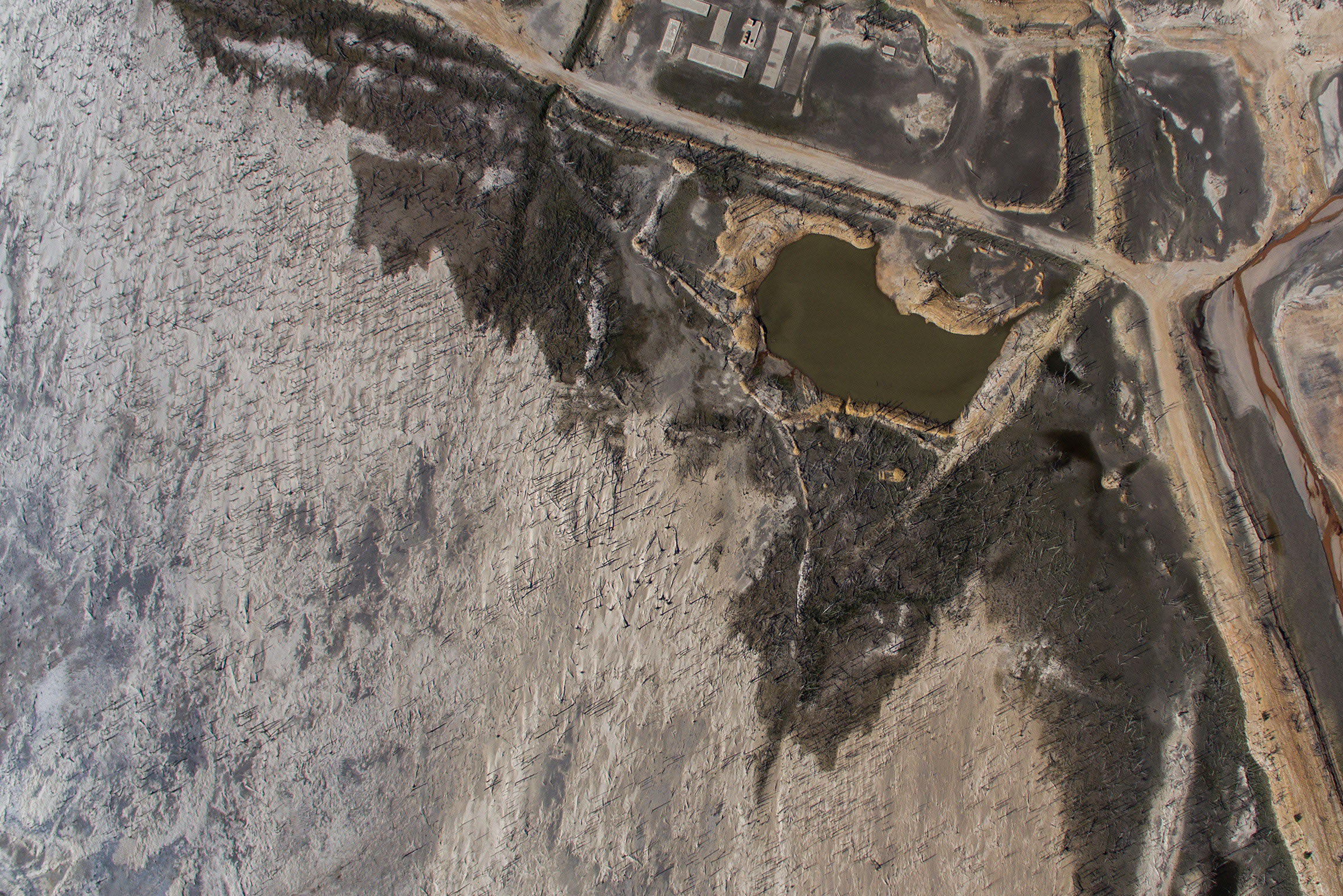



In September 2017, when it became clear the city of Cape Town had few viable solutions for a drought of potentially precedent-setting proportions, members of a non profit organisation, Water Shortage South Africa, took matters into their own hands. CEO and water expert, Benoit Le Roy, began planning for a proactive campaign to lobby the United Nations for aid and expertise. “This (drought) is bigger than South Africa can handle,” Le Roy said from his home in Johannesburg. “How does a country handle four million refugees?”
While cities and regions like Barcelona, Adelaide, California and Gauteng have all faced down a total water outage in recent years, Cape Town may be on a five-month trajectory to actually getting there. Alarmed experts have issued dire assessments, while the city itself has anticipated taps may run dry in March at the current consumption rate. For months, the city has been pleading with residents to lower their water usage, as it scrambles to augment the existing supply before “Day Zero”. In October, Executive Mayor Patricia de Lille released the first detailed statement preparing citizens for what might occur if they did not co-operate. Rumours, fears and false information abounded as officials quietly switched off taps in publicly unannounced neighbourhoods across the region.
What happens if a city runs out of municipal water? Models are clear on the severity: disease, the tanking of the economy, the destruction of sewerage infrastructure, outbreaks of violence; a potential shredding of the urban fabric. As Day Zero approaches, it is increasingly apparent that public over-consumption isn’t the only problem. Administrators both national and local are unprepared to avert what could become a full-on humanitarian crisis.
And so now it seems urgent to ask: How did this slow-motion disaster happen?
arrived at the port of Barcelona in May 2008, the city’s residents conceded they had finally been defeated by Spain’s worst drought in more than 60 years, despite their water saving efforts. The tankers were part of an emergency relief mission for a city reliant on reservoirs that had been reduced to 10% of capacity, and were two weeks away from hitting empty. The plan cost authorities €22-million (roughly R275-million at the time) and while it provided some relief, the massive dumps of water were barely enough to sustain demand. One tanker provided 180,000 people with fresh water for one day, and only 18 could be commissioned over the city’s busiest three months of the year, when tourists raised the 1.6-million-strong population by 15% percent. Mercifully, Barcelona was saved by a heavy rainfall described as miraculous.
In a report for the UK’s Independent, journalist Elizabeth Nash remarked, “(I)n the process [of warming up and drying out], this most modern of cities is living through a crisis that offers a disturbing glimpse of metropolitan futures everywhere.”
Fast forward to Cape Town in 2017, a geographically similar metropole, facing a one-in-1,000-year weather calamity. It’s the second city in South Africa to come dangerously close to running out of municipal water. Two years ago, water tankers had to be dispatched to the Johannesburg neighbourhoods of Brixton, Greenpoint and Coronationville as taps in those areas ran dry. Cape Town is a rapidly urbanising space with a population of 4.5-million, all of whom live in an increasingly dry province and country that have seen weather patterns shift dramatically in recent years. Like many parts of southern Africa, it keenly feels the effects of the El Niño phenomenon, with record high temperatures setting in for weeks at a time.
hen tankers carrying millions of litres of fresh water from France


measures that may or may not be enough to see the city through six dry summer months--with no guarantee that a miraculous rain squall will arrive in the nick of time. Possible solutions have been in the works for over a decade, but many of them have been put into practice far too late. According to an experienced water researcher close to the issue who asked to remain anonymous for professional reasons, a tangible sense of concern first emerged among the city’s administrators in late 2016. “They really started to worry around May, when the rainfall they were hoping for wasn’t starting to show,” said the source. “A lot of climatologists thought we would get back to normal rainfall this year.”
The climatologists were wrong. Signs of overt panic in bureaucratic hallways became palpable in July 2017, added the source. But the first official warnings of potential water scarcity, and of the need to diversify the city’s water supply using ground water and other sources, was recorded by the city’s own researchers and consultants as early as 2002. The panic came 15 years too late.

uch like Barcelona, Cape Town will now face last-minute, emergency
October 2017, when it became clear that the winter rains were not going to arrive, and that the volume of the city’s only water supply--an innovative network of six dams dotted strategically around the region – would dip well below 30% by the middle of the month, Executive Mayor Patricia de Lille held a sombre press conference.
“Due to the impacts of climate change and reduced average rainfall (...) the city of Cape Town has adopted a scenario called the New Normal,” she told those gathered before her. She then announced that authorities would be enforcing Phase One, which they deemed “water rationing through extreme pressure reduction”.
“The New Normal means that, as a permanent drought region, we have to change our relationship with water as a scarce resource,” said the mayor.
By mid-month, residents were reporting outages and water cuts at their homes to local radio stations and on Facebook groups. While the city had warned of rationing, authorities wouldn’t say where the outages would be occurring, and rumours began to surface, including of discrimination by class and race. Neighbourhoods with recorded levels showing overuse were fitted with measurement metres that strangled each household’s supply at the designated 87 litres, meaning that homes with large families were being cut off as early as noon every day. Borehole drillers’ schedules booked up well into the new year, and their prices for finding and abstracting ground water sky-rocketed with the demand. At the collection points beside natural springs burbling from Table Mountains into Newlands, queues of residents stretched later and later into the night.
By then, after a year of exhorting residents to “cut down water use or else” by the city, it had become clear that, without drastic interventions, public consumption would not change significantly from the more than 600-million litre-a-day standard to the 500-million litre-a-day target. Nevertheless, city officials at the 15th Biennial Groundwater Conference in Stellenbosch on 18 October steadily reiterated that they were confident a reduction in consumption would stave off a crisis.
“We're sitting at around 600-megalitres (of water a day),” said Barry Wood, water supply manager of the City of Cape Town. “There are some signs that we are starting to fall again, because we've been ramping up the awareness, we've started throttling down the distribution systems, et cetera. So we believe we're going to get down to 520-megalitres a day,” he said.
It was also reiterated that alternative sources of water were “still being considered,” but that bulk supply would realistically not come online by Day Zero – the day taps throughout the city run dry. This was deemed Phase Three: “A limited period in which the city can continue to supply water before complete water system failure,” according to De Lille’s press release. It remains unclear exactly when that day will come, although the city anticipates it could happen in March 2018.
“The day or month of (Day Zero) happening is, however, not as important as what we do now to avoid such a time,” De Lille said in a video address to residents announcing the disaster plan.
n May 2017, the Western Cape was declared a disaster area. By early


study published for the Western Cape’s supply system in 2007 stated conclusively that demand management or encouraging water conservation would not be enough to provide for a time of drought, projected to occur in 2015, Former Director General of Water Affairs, Mike Muller, told Daily Maverick Chronicle.
“(The study) listed 25 different interventions that Cape Town could undertake to provide more water or to use less water… it estimated how much each of them would cost,” said Muller, explaining that the study listed abstraction from the Table Mountain Group aquifer and water re-use among the suggested interventions.
“Those options were all put on the table as long ago as 2007, with the warning that by 2015 you are going to have to do some of these things, and they weren’t done,” said Muller. “None of them; except for attempts to manage demand, encourage people to use less and to things like reduce leaks and wastage. Those things were done but it was always recognised in the studies that that they were not going to be enough,” he said. “Cape Town city in particular thought they would be able to get away with doing nothing until 2022.”
Environmental hydrogeologist Ritchie Morris echoed Muller’s concerns that warnings had been long-standing, but added that no single administration could be held accountable. In his view, the problem is systemic. Morris points out that though administrations change, the problem of scientists’ research being hampered by bureaucratic red tape remains constant.
Asked why solutions were not implemented sooner, local government officials noted that the Berg River Dam project, completed eight years previously in 2009, had augmented Cape Town's water supply by 20% alongside efforts to curb water consumption. The city could not have proceeded more quickly due to the risk of unnecessarily over-capacitating the supply system at significant cost to the ratepayer, they said. De Lille told Daily Maverick Chronicle the city had to balance water security with maintaining fair tariffs for ratepayers. “The city could not have proceeded more quickly due to the risk of unnecessarily over-capacitating the supply system at significant cost to the ratepayer,” she said via an email from her spokesperson, Zara Nicholson. “In order to extend available water supply, the city has implemented progressive demand management as the most cost-effective measure, and water rationing has been intensified, which is yielding results to help stretch our water supplies. Rationing is being performed by drastically reducing water pressure to forcibly drive consumption down to the levels required by National Government.” The city had met with the Minister of Water and Sanitation in an attempt to ensure emergency licences could be obtained as quickly as possible, Nicholson added.
“The city is at the same time working as fast as it can to bring emergency water schemes online to augment our water supplies.”

alls to “avoid such a time” were made at least a decade ago, however. A
particular has been suggested by hydrologists for at least 15 years. It comes from a network of porous, rocky underground storage systems called aquifers, ubiquitous in the Cape. Research into their viability as a potable water source for municipal use was already under way in the early 2000s and indicates the city was aware of the need for augmentation schemes at the time.
“It was part of a national plan,” said Christine Colvin, Senior Manager for Fresh Water at the World Wildlife Fund South Africa. Colvin, who was a researcher with the Council for Scientific and Industrial Research (CSIR) in Stellenbosch at the time, noted that “the three tiers of government – the national Department of Water and Sanitation, the province, and the city – were very well aligned around the plan that was developed in the early 2000s that looked at augmenting supplies into the future to meet a predicted growing demand.”
The research undertaken was, apparently, extensive. “We did a lot of research at that stage and established potential well field sites that would link into the existing water infrastructure, particularly the major pipelines coming from Theewaterskloof Dam,” said Colvin. “And from the researchers’ perspective, which was my perspective at that stage, we were then ready to move to the next phase from 2006.”
''Waiting for miracles does not constitute policy''
The next phase never came, despite recommendations and warnings by the city’s own contracted specialists over the coming years that groundwater would have to augment the dam supply. It was unclear why administrators chose not to go through with the project, or why they are still mulling over it. Currently, the city is abstracting only about 2% of its current use.
“Why (the city didn’t move into the next phase), I don’t know,” said the anonymous researcher. “Probably because it rained a lot. My personal opinion is that the Democratic Alliance is trying to show efficiency – that they are not overspending on projects, and that capital budget wasn’t used for alternative water supply development (when it was not needed).”
“The engineers were telling the city ‘there’s 97% assurance of supply, which means that out of every 100 years, you’ll only need restrictions for three years',” said the source. “(So) they didn’t feel the need to plan ahead and add additional supply, because then we would have too much water.”
“I think what we found was there was a degree of optimism and a degree of belief in the effectiveness of these local measures that perhaps misled people,” said Winter.
“In 2013 and 2014 there were some really good rains,” he said. “During the wet season... not only had consumption in the city gone down, but the farmers hadn't used their full allocations, which made it look like there was more water available. So I think it was just a case that people were being more optimistic, people were trying to avoid spending money, which I understand, but they were warned and they chose to ignore the warning on a number of occasions,” he said.
While the national Department of Water and Sanitation is responsible for the allocation of bulk water, the city is responsible for managing it--and it has been lauded for a job well done for years. “The city was (told), we’re doing a good job,” said Claire Pengelly, Water Programme Manager at green economy sector development agency Greencape, who explained that the models administrators use to forecast water supply take long-term climatic models into account. “They thought, ‘we’re managing this system so efficiently and we’ve still got a hell of a lot of wiggle room',” she said. “The difficulty with being as efficient as possible means that you don’t want to build redundancy into a system, because in effect you feel like you’ve got redundancy already. So you don’t want to put in a hugely expensive project when you actually don’t need it, according to all the models and what (the engineers) are saying,” she explained.
Based on all their projections, water levels looked positive until the early 2020s.
“Cities are not allowed to plan on droughts, because they may not happen,” said Le Roy, a water and waste expert and the CEO of Water Shortage South Africa, a philanthropic NGO that assists with drought relief. “The city has had a flat demand curve over the last 10 years, despite growth in population. Water demand growth has been on the low curve and there have been a lot of plans to reuse sewage, desalination and so on over the last three or four years. So they were looking at plans and thinking things look pretty good,” he said.
There was, however, one thing they didn’t plan for: Climate change wasn’t progressing according to the Power Point presentations.
roundwater abstraction as a viable source of supply augmentation in


taking a noticeable effect around 2030 - estimations that now seem ludicrous in their conservatism.“This drought is an extraordinary weather event,” said Pengelly. “But I think that must be appreciated in terms of how different what we’re experiencing now is in comparison to what we’ve seen before.”
De Lille’s administration has been criticised for being too lenient on the national Department of Water and Sanitation and not publicly pressuring Minister Nomvula Mokonyane, a close ally of President Jacob Zuma, to clean up her department and ensure water provision was made for the Western Cape.
In 2017, Auditor-General, Kimi Makwetu’s report showed that water, along with school infrastructure, achieved the lowest targets in rolling out key programmes, despite those spending their entire budget. According to Makwetu, only 22% of their targets set for the year were achieved, while 67% weren’t achieved.
Western Cape Premier Helen Zille has, however, slammed Minister Mokonyane for failing to provide adequate funding for water infrastructure. At the Cape Water Indaba in 2017, it emerged that almost R3-billion was needed to address the water infrastructure backlog in the province. Zille, in the interim, has vowed to bill the national minister for water systems maintenance and repairs, while acknowledging she doubts the money will be forthcoming.
As far as the minister is concerned, however, the drought simply “caught us napping,” she said at the Water Indaba in 2017.
Since then, Nicholson told Daily Maverick Chronicle, co-operation has been more fruitful. “The mayor has met with the Minister of Water and Sanitation to discuss which licences will be required for emergency augmentation schemes. The minister made a commitment to work with the city to ensure we implement the various processes as quickly as possible to obtain the relevant licences,” she said. “The city has also received R20.8-million towards the city of Cape Town’s emergency disaster relief from the National Disaster Management Centre in the Department of Co-operative Governance.”
But Le Roy believes the Democratic Alliance-run province and city should have been more pro-active about distancing themselves from the national department’s failure to make enough bulk water provision, while simultaneously putting public pressure on Mokonyane to improve their mandated service. Mokonyane has been embroiled in multiple scandals, ranging from the “Ben10” reports alleging that she had young lovers she rewarded with tenders and other favours, to a string of axings and suspensions of senior members of her department.
“The city has taken their eye off the ball because they are not responsible for the provision of bulk water, the national department is,” said Le Roy. “Treating sewage and checking water quality. That’s where their expertise lies. Hoping for rain and relying on National to make provision was a big mistake,” he said.
In other words, waiting for miracles does not constitute policy.
ost expert projections suggested that climate change would only start

>>|
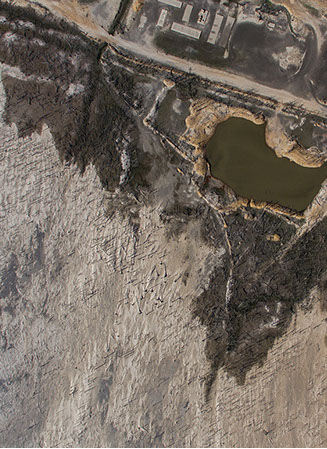
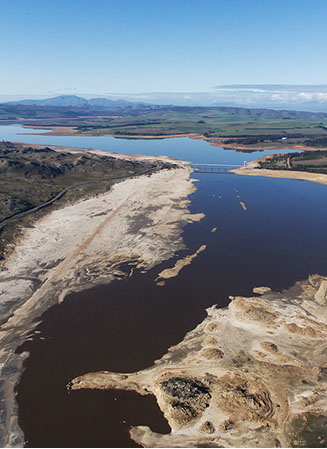
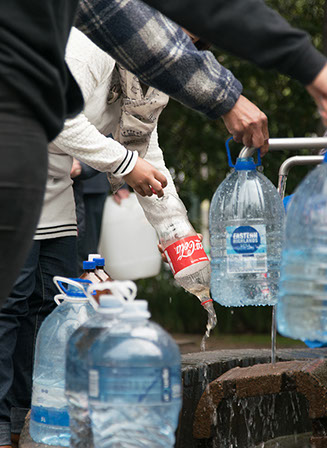
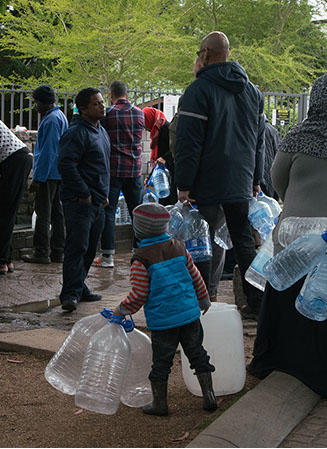
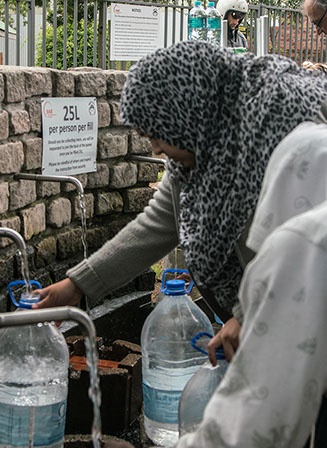
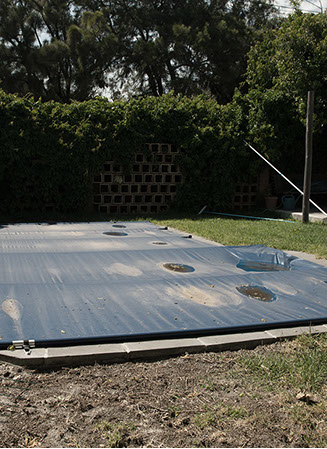

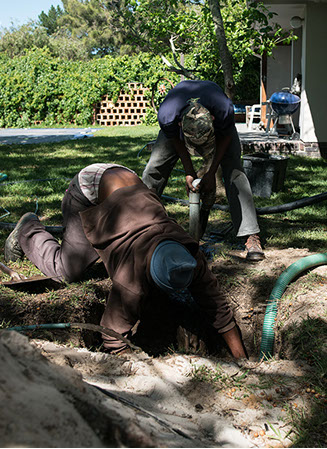
Theewaterskloof Dam, captured in July by Christiaan Serfontein.
Theewaterskloof Dam, captured in July by Christiaan Serfontein.
Residents resorting to storing spring water. Image by Shaun Swingler.
Residents resorting to storing spring water. Image by Shaun Swingler.
Residents resorting to storing spring water. Image by Shaun Swingler.
Residents resorting to digging private boreholes. Image by Shaun Swingler.
Residents resorting to digging private boreholes. Image by Shaun Swingler.
Residents resorting to digging private boreholes. Image by Shaun Swingler.
>
for this investigation painted a grim picture of just how unlikely it is that sufficient alternative water provision would be ready by the time the dams run dry. They were also critical of how long the city has waited to take the appropriate action. A key point raised was concern that there may be more unusable sediment at the bottom of the dams than we are aware of.
A further concern: existing augmentation goals, as voiced by De Lille, mention an initial goal of 250-million litres, to be increased incrementally. With water augmentation tenders having gone out in August, and some initial tenders found to be unviable, water researchers agree that the chances are slim that even the rationed target of 500 to 600-million litres will be reached by March. City water supply manager Wood has said the city aims to increase the current yield of about 10-megalitres from groundwater to 100-megalitres, but the timeline is still unspecified. The unnamed researcher Chronicle spoke to bluntly said there was “no way” the targets would be met in time, given lengthy tender implementation, drilling and building processes. At the Groundwater Conference, chairman of the organising committee Roger Parsons said public perceptions grossly underestimated the seriousness of the situation.
Le Roy believes dams may run dry sooner than March, and is preparing accordingly. It’s a turning point for both his family and for the country if his projections regarding the drought turn out to be correct. He believes the school and university holidays will trigger the beginning of an exodus from Cape Town that will send his daughter home indefinitely and the local economy into freefall.
“I’ve told (my daughter) to keep her petrol tank full and a bag of clothes in the car,” said Le Roy from his home in Johannesburg. “When the Christmas holidays start she’ll leave Cape Town and she won’t necessarily go back. We are being cautious and keeping our options open.”
By December, Le Roy believes the city of Cape Town could be in crisis mode or, interpreting De Lille’s October statement, Phase 2. This would include rationing of the entire water system, with assigned water points being provided with inventory, AKA drinkable water. He believes it will not take long before badly affected businesses start closing their doors and/or attempt to relocate staff, or let them go. Productivity across formal sectors will plummet and panic purchasing of bottled water will set in as taps run dry. Those who can afford to will probably pack their cars and drive to friends and family in other provinces.
Already, industries are beginning to make emergency provisions. On 12 October, Transnet authorities suspended the sale and supply of fresh water at the Port of Cape Town, an important repair and maintenance facility on one of the world’s busiest trade routes.
“Ship repairers are requested to advise their clientèle that no fresh water will be available for any repair work to vessels during their stay in the dry docks,” the statement said. “Vessels are hereby requested to take in water at other ports not affected by the drought.”
The dry weather has taken a huge toll on farmers in the region, who have had to cut their water consumption by 50% in the last year. In the fourth quarter of 2015 alone, the national agriculture sector lost 37,000 jobs, which pushed an additional 50,000 people below the poverty line and accelerated consumer inflation and rising food prices.
“Farmers in the Western Cape are absolutely at the front line of having to implement dramatic changes,” said Colvin. They are being asked to severely curtail their water demand and their water usage. And that is resulting in farmers having to decide which fields they irrigate and which they don’t,” she said.
“We know for instance the fruit farmers are removing the blossoms from their trees so that the trees don’t fruit, because they can just about keep the trees alive with the water that they have if they don’t fruit.”
Whole sectors and industries across the board are having to make increasingly difficult decisions in the face of uncertainty about just how bad things will get.
Colvin is also projecting a turning point at the end of the year.
“The view from the experts is, to meet the targets in megalitres by the dates they are needed to stave off Day Zero is extremely challenging,” she said. “There’s no contingency available there. All of us who’ve worked in this sector, we’re already looking towards the end of the year and the Christmas season and we know there’s big competition for desalination worldwide, especially after the hurricanes (in North and Central America), so there’s very little wiggle room at the moment.”
'' You would have to allocate a certain amount of hours to stand in a queue and I guess it doesn’t take too much imagination to think of the implications ''
Dr Kevin Winter of the University of Cape Town (UCT)’s department of Environmental and Geographical Science and Future Water Institute, described a worst-case scenario for Cape Town back in February, should the taps run dry.
“Water will have to be trucked in to central points,” wrote Winter for the Cape Town Partnership. “You would have to allocate a certain amount of hours to stand in a queue and I guess it doesn’t take too much imagination to think of the implications. Apart from being an administrative nightmare, this sort of situation will also have a huge impact on the environment, human health, the economy and civil society.”
Should Cape Town’s water system fail – which the mayor has vowed will not happen – infrastructure would be at serious risk. In the absence of water pressure to counteract the weight of what they’re buried under, underground pipes would crack and burst. Raw faeces could be caking in overflowing toilets and on pavements throughout the city, with no water to wash it down into the overburdened, plugged up sewage system below. “Open defecation” would probably become common. The smell would be unbearable; the waste attracting flies and the heat bringing mosquitoes. According to Le Roy, methane gas released from the drying faeces would pose a risk of subterranean explosions.
In the townships such as Gugulethu, Khayelitsha, Masiphumelele, and Imizamo Yethu, it is not hard to imagine the effects, already widespread where sanitation is poor. Children and the elderly living in close proximity and unable to escape a potential build-up of sewage could start to contract food and water-borne diseases, including gastro, diarrhoea, hepatitis A and salmonella. Respiratory viruses like influenza would also be more easily transmitted by unwashed hands.
“Issues around sewage disposal lead to increased flies and rodents,” explained Dr Kerrigan McCarthy of the National Institute for Communicable Diseases (NICD). “There have been outbreaks of Typhoid in the Western Cape before, transmitted via faecal-oral contamination. (So) there is potential for increased disease transmission,” she said, adding that the potential drought crisis is “on the national disaster relief committee’s radar”.
“Impacts on human health (would) become increasingly evident,” wrote Winter. “The absence of clean drinking water and water for body washing results in dehydration, diarrhoea and related illnesses, along with skin sores and malnutrition.”
If this were not contained quickly and hospitals became overwhelmed or unable to operate at capacity without water, more severe outbreaks could follow. Médecins Sans Frontières, the international medical humanitarian organisation, has a presence in Khayelitsha and was unable to comment on the existence of an emergency contingency plan for any outbreaks of disease, but said that, as a partner to the City of Cape Town and the Western Cape Department of Health, it would be “monitoring the situation to assess if any support would be necessary or feasible.”
Wood and De Lille have said the city has a disaster plan in place in case of water system failure. They did not, however, specify what it was.
Parsons, meanwhile, has described the current situation as “dire.” Airwater entrepreneur Ray de Vries described it as a “catastrophe,” echoing Muller and Le Roy’s sentiments that in their opinion, Cape Town could be the first major city in the world to run out of municipal water.
Asked for clarification, De Vries told Daily Maverick Chronicle that if Cape Town were to run out of water, it would represent a highly visible municipal failure within a major developed, global city, which he believed was unprecedented. Mayor De Lille herself had said a well-run city does not run out of water, he said. Yet, he added, in his view current indications were that augmentation projects would not provide the required yield in time.
Whether this will happen depends on a number of unpredictable variables: quick, painless tender processing, rapid implementation and – most fickle of all - the weather.
As for Le Roy and his team at Water Shortage South Africa, they’re not waiting to find out. They’re making as many international connections as possible, with anybody “with an ear for the dire South African water situation”. And they’re tackling the bureaucratic ladder towards the United Nations, before it’s too late.
But Le Roy is not optimistic. “The low road is the probable road, given the information, which is the worst-case scenario,” he said. “The indications are that we’re there.” DM
e Roy and many other water experts that Daily Maverick Chronicle spoke to

By Diana Neille, Marelise van der Merwe & Leila Dougan